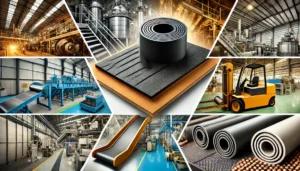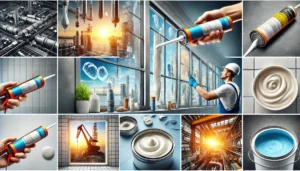Taking proper care of power tools aids in ensuring safe and optimal performance while also prolonging their life. When upkeep is neglected the equipment may experience bumps in performance efficiency, even resulting in possible failures and safety hazards. The five maintenance tips below will ensure that the life cycle of your power tools is increased while their functionality remains at optimal levels.
1. Consistent Cleaning
All power tools should be cleaned after each use. Leaving equipment caked in dust, residue and debris can lead to overheating, blocked ventilation, and even mechanical failure. To clean external surfaces, vents and areas where grime has built up, use a soft brush or compressed air. A damp cloth can be employed to scrub stubborn stains, but make sure the tool is unplugged first. Preventive maintenance will help avoid clogging in the cooling systems, which is known to trigger overheating. Additionally, if the tool is used in a greasy environment, more frequent cleaning may be necessary. Regular cleaning is one of the best habits that can prevent one from dealing with unnecessary wear and tear of their tools.
2. Proper Lubrication
When using power tools, lubrication is a key aspect that needs to be considered in order for the different surfaces to move appropriately. Eventually, the various components of the tool will fail owing to friction. Gears, bearings, and any moving part should also be lubricated according to the manufacturer’s specifications. For instance, rotary tools or drills often have their motors or spindles lubricated. Always remember, however, that excess lubrication is not advisable as it is likely to collect dust and debris. Remember to always adhere to the specified lubricant type that works best with your tool. Periodic lubrication not only lessens friction and rust but also ensures the smooth running of the tool while fully loaded.
3. Components Inspection and Maintenance
Remember to examine any power cords, plugs, and switches of the components. They could be damaged or frayed which may put safety at risk as well as affect the tool’s performance. Damaged components should be fixed or replaced without delay so that any malfunctions can be avoided. Any tools that have brushes as effective parts need periodic checks to ensure they are not overworked. Worn out brushes can contribute towards decreased performance and overheating of the motor. Remember to check any tool attachments such as blades or sanding pads. Worn-out or blunt tools will certainly decrease performance and efficiency or contribute to faster damage.
4. Proper Storage
In order to safeguard them from environmental influences that can be detrimental, it is imperative to store power tools in the appropriate manner. Store the tools in a location that is clean, dry, and devoid of dust in order to ward off corrosion and rust. For tools that are in regions where humidity cannot be controlled, it is advised that silica gel packs or dehumidifiers are used within the storage spaces to combat potential problems from moisture. Use the original cases or other protective covers to protect these tools from external dirt and impacts. Such methods of storing the tools also makes it possible to prevent undue stress and or impacts on the tools, preserving their condition. Tools can be hung on a pegboard or kept in drawers which not only lifts the space constraint but also ensures easy access.
5. Battery Management Software for Wireless Equipment
In the case of power tools that operate without cords, batteries require particular attention. Adhere to the recommendations on charging patterns and storage of the tool. Lithium-ion batteries have a limited amount of charge cycles, and emptying them completely will reduce their overall life. Batteries should be kept in a well-ventilated, cool, and dry area, avoiding high heat or freezing temperatures. Any form of extreme temperature can damage battery cells and cause them to be less efficient. Battery contacts should be kept clean to ensure the optimal transfer of energy. Also, purchase good quality battery chargers that have protection features to prevent overheating while charging. Using multiple batteries that can be switched will reduce the wear and tear of an individual battery.
6. Do Not Subject Equipment To Heavy Use
Power tools that are overloaded are greatly prone to damages. It is crucial to take note that each power tool is built with a specific overload threshold. When overworked, individual components of the tool, such as the motor, will be put under duress. A great example is using a drill with large bits on solid surfaces like concrete – it can turn out to be extremely damaging as the drill will overheat and damage internal components. Only operate tools that are within the recommended power limits, and don’t forget to include short breaks during extended usage.
7. Follow Manufacturer Guidelines
You should always consult the manufacturer’s manual to ensure you cope with the specific maintenance procedures for your tool. The manual contains information on how to carry out cleaning, lubrication, storage, and even replacement parts. Adhering to these guidelines guarantees that you are maintaining the tool as intended, without any undue stress on its systems, which is pivotal for its durability.
Conclusion
These suggested maintenance procedures are important in ensuring your power tools serve you as long as possible. Like any other equipment, regular maintenance is needed for maximum safety, performance, and reliability. The simple steps of cleaning after every use, lubricating, regular component checks, proper storage, and battery management will save you a lot of money, as well as therapy for all the stress that comes from averting expensive repairs from that next project. If done consistently, power tools can do wonders and, with care, will remain a treasured addition to every professional or DIY toolbox.










